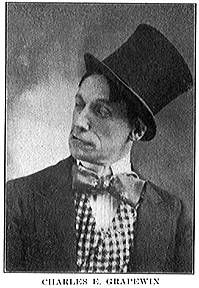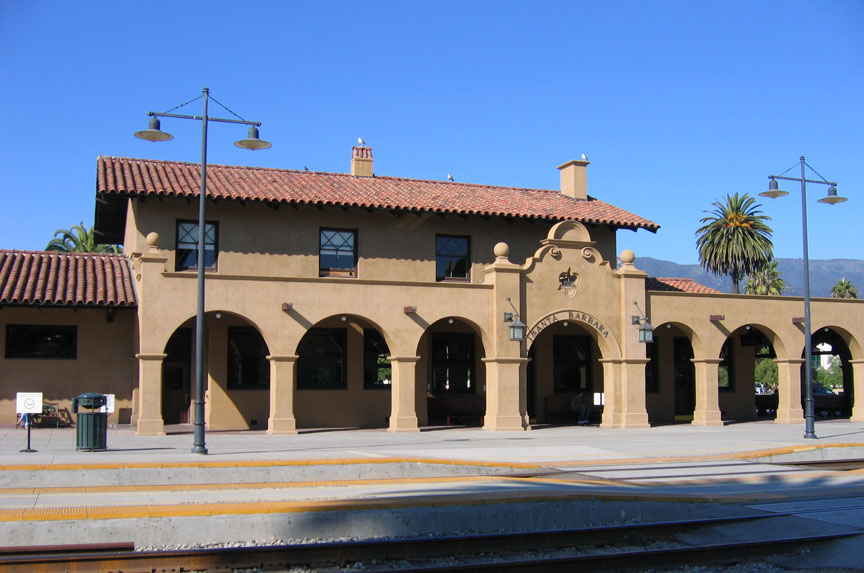|
Buskirk-Chumley Theater
The Buskirk-Chumley Theater, formerly the Indiana Theater, is a historic theater in Bloomington, Indiana. History The theater first opened on December 11, 1922, initially built for presenting vaudeville and silent films. More recently it was renovated for use as a performing arts venue. It hosts a variety of shows and performances. The theater is listed on the National Register of Historic Places The National Register of Historic Places (NRHP) is the Federal government of the United States, United States federal government's official United States National Register of Historic Places listings, list of sites, buildings, structures, Hist .... The theater is located in the Courthouse Square Historic District. The theater has a distinctive red neon marquee that says "Indiana". The theater was built in Spanish mission revival architecture style and held 616 seats when it was built. It is known locally as the "Indiana Theater" or the "Bus-Chum". It was used as a movie theater ... [...More Info...] [...Related Items...] OR: [Wikipedia] [Google] [Baidu] |
Bloomington, Indiana
Bloomington is a city in Monroe County, Indiana, United States, and its county seat. The population was 79,168 at the 2020 United States census, 2020 census. It is the List of municipalities in Indiana, seventh-most populous city in Indiana and the fourth-most populous outside the Indianapolis metropolitan area. It is the home of Indiana University Bloomington, the flagship campus of the Indiana University system. Established in 1820, IU Bloomington enrolls over 45,000 students. The city was established in 1818 by a group of settlers from Kentucky, Tennessee, the Carolinas, and Virginia who were so impressed with "a haven of blooms" that they called it Bloomington. It is the principal city of the Bloomington metropolitan area, Indiana, Bloomington metropolitan area in south-central Indiana, which had 161,039 residents in 2020. Bloomington has been designated a Tree City USA since 1984. The city was also the location of the Academy Awards, Academy Award–winning 1979 movie ''Brea ... [...More Info...] [...Related Items...] OR: [Wikipedia] [Google] [Baidu] |
Vaudeville
Vaudeville (; ) is a theatrical genre of variety entertainment which began in France in the middle of the 19th century. A ''vaudeville'' was originally a comedy without psychological or moral intentions, based on a comical situation: a dramatic composition or light poetry, interspersed with songs and dances. Vaudeville became popular in the United States and Canada from the early 1880s until the early 1930s, while changing over time. In some ways analogous to music hall from Victorian Britain, a typical North American vaudeville performance was made up of a series of separate, unrelated acts grouped together on a common bill. Types of acts have included popular and classical musicians, singers, dancers, comedians, trained animals, magicians, ventriloquists, strongmen, female and male impersonators, acrobats, clowns, illustrated songs, jugglers, one-act plays or scenes from plays, athletes, lecturing celebrities, minstrels, and films. A vaudeville performer ... [...More Info...] [...Related Items...] OR: [Wikipedia] [Google] [Baidu] |
Silent Film
A silent film is a film without synchronized recorded sound (or more generally, no audible dialogue). Though silent films convey narrative and emotion visually, various plot elements (such as a setting or era) or key lines of dialogue may, when necessary, be conveyed by the use of inter- title cards. The term "silent film" is something of a misnomer, as these films were almost always accompanied by live sounds. During the silent era, which existed from the mid-1890s to the late 1920s, a pianist, theater organist—or even, in larger cities, an orchestra—would play music to accompany the films. Pianists and organists would play either from sheet music, or improvisation. Sometimes a person would even narrate the inter-title cards for the audience. Though at the time the technology to synchronize sound with the film did not exist, music was seen as an essential part of the viewing experience. "Silent film" is typically used as a historical term to describe an era of cinema p ... [...More Info...] [...Related Items...] OR: [Wikipedia] [Google] [Baidu] |
WFIU
WFIU (103.7 FM) is a public radio station broadcasting from Indiana University Bloomington (IUB) in Bloomington, Indiana, United States. The station is a member station of NPR, Public Radio International and American Public Media. Together with IUB-owned television station WTIU (channel 30), it is known as Indiana Public Media. Studios are located in the Radio-Television Building on the IUB campus, and the transmitter is located at a site on South Sare Road in Bloomington. Seven translators broadcast WFIU and its second HD Radio subchannel, primarily in areas outside of the main transmitter's coverage area, including Terre Haute and Kokomo. WFIU was established in 1950 and initially served as a training ground for IUB students. It moved to its present frequency in 1951 and was one of NPR's charter members. History Indiana University had been producing radio programming since 1937, but it was not until 1942 that the university filed to established a radio station in the t ... [...More Info...] [...Related Items...] OR: [Wikipedia] [Google] [Baidu] |
National Register Of Historic Places
The National Register of Historic Places (NRHP) is the Federal government of the United States, United States federal government's official United States National Register of Historic Places listings, list of sites, buildings, structures, Historic districts in the United States, districts, and objects deemed worthy of Historic preservation, preservation for their historical significance or "great artistic value". The enactment of the National Historic Preservation Act (NHPA) in 1966 established the National Register and the process for adding properties to it. Of the more than one and a half million properties on the National Register, 95,000 are listed individually. The remainder are contributing property, contributing resources within historic district (United States), historic districts. For the most of its history, the National Register has been administered by the National Park Service (NPS), an agency within the United States Department of the Interior. Its goals are to ... [...More Info...] [...Related Items...] OR: [Wikipedia] [Google] [Baidu] |
Courthouse Square Historic District (Bloomington, Indiana)
Courthouse Square Historic District is a national historic district located at Bloomington, Monroe County, Indiana. The district encompasses 57 contributing buildings in the central business district of Bloomington. It developed between about 1847 and 1936, and includes notable examples of Classical Revival, Beaux Arts and Italianate style architecture. Located in the district are the separately listed Bloomington City Hall, Monroe County Courthouse, Princess Theatre, and Wicks Building. Other notable buildings include the Federal Building (c. 1912), Masonic Temple, former Faulkner Hotel (c. 1847), Odd Fellows Building (1892), Allen Building (1907), First National Bank Building (1907), Knights of Pythias Building (1907), and Graham Hotel Building. ''Note:'' This includes and Accompanying photographs. It was listed on the National Register of Historic Places The National Register of Historic Places (NRHP) is the Federal government of the United States, United Sta ... [...More Info...] [...Related Items...] OR: [Wikipedia] [Google] [Baidu] |
Spanish Mission Revival Architecture
The Mission Revival style was part of an architectural movement, beginning in the late 19th century, for the revival and reinterpretation of American colonial styles. Mission Revival drew inspiration from the late 18th and early 19th century Spanish missions in California. It is sometimes termed California Mission Revival, particularly when used elsewhere, such as in New Mexico and Texas which have their own unique regional architectural styles. In Australia, the style is known as Spanish Mission. The Mission Revival movement was most popular between 1890 and 1915, in numerous residential, commercial and institutional structures, particularly schools and railroad depots. Influences All of the 21 Franciscan Alta California missions (established 1769–1823), including their chapels and support structures, shared certain design characteristics. These commonalities arose because the Franciscan missionaries all came from the same places of previous service in Spain and colonial ... [...More Info...] [...Related Items...] OR: [Wikipedia] [Google] [Baidu] |
Theatres In Indiana
Theatre or theater is a collaborative form of performing art that uses live performers, usually actors to present experiences of a real or imagined event before a live audience in a specific place, often a stage. The performers may communicate this experience to the audience through combinations of gesture, speech, song, music, and dance. It is the oldest form of drama, though live theatre has now been joined by modern recorded forms. Elements of art, such as painted scenery and stagecraft such as lighting are used to enhance the physicality, presence and immediacy of the experience. Places, normally buildings, where performances regularly take place are also called "theatres" (or "theaters"), as derived from the Ancient Greek θέατρον (théatron, "a place for viewing"), itself from θεάομαι (theáomai, "to see", "to watch", "to observe"). Modern Western theatre comes, in large measure, from the theatre of ancient Greece, from which it borrows technical terminolog ... [...More Info...] [...Related Items...] OR: [Wikipedia] [Google] [Baidu] |






